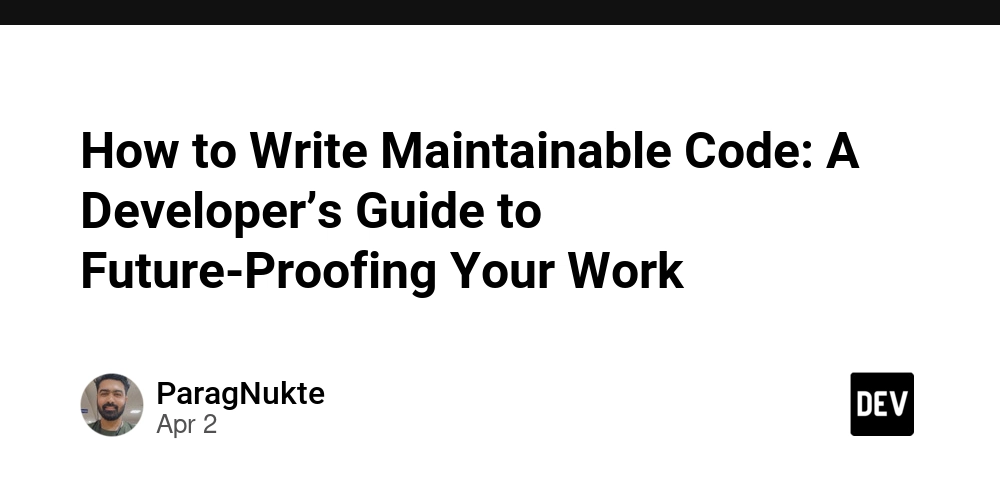How to Write Maintainable Code: A Developer’s Guide to Future-Proofing Your Work
Introduction Ever had to untangle a messy codebase that looked like a spaghetti junction of functions, global variables, and cryptic comments? If yes, you know the agony of dealing with unmaintainable code. Writing maintainable code isn't just a good practice—it's a necessity if you want scalable, collaborative, and bug-free development. Having spent over three years in the industry, I’ve learned that maintainability isn’t just about writing "clean code"—it’s about structuring it in a way that ensures adaptability. So, let’s dive into the fundamentals that make code maintainable. 1. Keep Your Code Modular & Organized A well-structured codebase is a lifesaver. The golden rule? “Write code as if the next person maintaining it is a highly stressed developer who has no idea what’s going on.” That future developer might even be you, months down the line. Use meaningful folder structures based on features or functionality. Follow separation of concerns by breaking code into well-defined modules. Keep files small—each module should have a single responsibility.

Introduction
Ever had to untangle a messy codebase that looked like a spaghetti junction of functions, global variables, and cryptic comments? If yes, you know the agony of dealing with unmaintainable code. Writing maintainable code isn't just a good practice—it's a necessity if you want scalable, collaborative, and bug-free development.
Having spent over three years in the industry, I’ve learned that maintainability isn’t just about writing "clean code"—it’s about structuring it in a way that ensures adaptability. So, let’s dive into the fundamentals that make code maintainable.
1. Keep Your Code Modular & Organized
A well-structured codebase is a lifesaver. The golden rule? “Write code as if the next person maintaining it is a highly stressed developer who has no idea what’s going on.” That future developer might even be you, months down the line.
- Use meaningful folder structures based on features or functionality.
- Follow separation of concerns by breaking code into well-defined modules.
- Keep files small—each module should have a single responsibility.









































































































































































![[The AI Show Episode 142]: ChatGPT’s New Image Generator, Studio Ghibli Craze and Backlash, Gemini 2.5, OpenAI Academy, 4o Updates, Vibe Marketing & xAI Acquires X](https://www.marketingaiinstitute.com/hubfs/ep%20142%20cover.png)


























































































































![[FREE EBOOKS] The Kubernetes Bible, The Ultimate Linux Shell Scripting Guide & Four More Best Selling Titles](https://www.javacodegeeks.com/wp-content/uploads/2012/12/jcg-logo.jpg)



![From drop-out to software architect with Jason Lengstorf [Podcast #167]](https://cdn.hashnode.com/res/hashnode/image/upload/v1743796461357/f3d19cd7-e6f5-4d7c-8bfc-eb974bc8da68.png?#)







































































































.png?#)




.jpg?#)


















 (1).webp?#)













_Christophe_Coat_Alamy.jpg?#)







































































































![Rapidus in Talks With Apple as It Accelerates Toward 2nm Chip Production [Report]](https://www.iclarified.com/images/news/96937/96937/96937-640.jpg)









































































































































